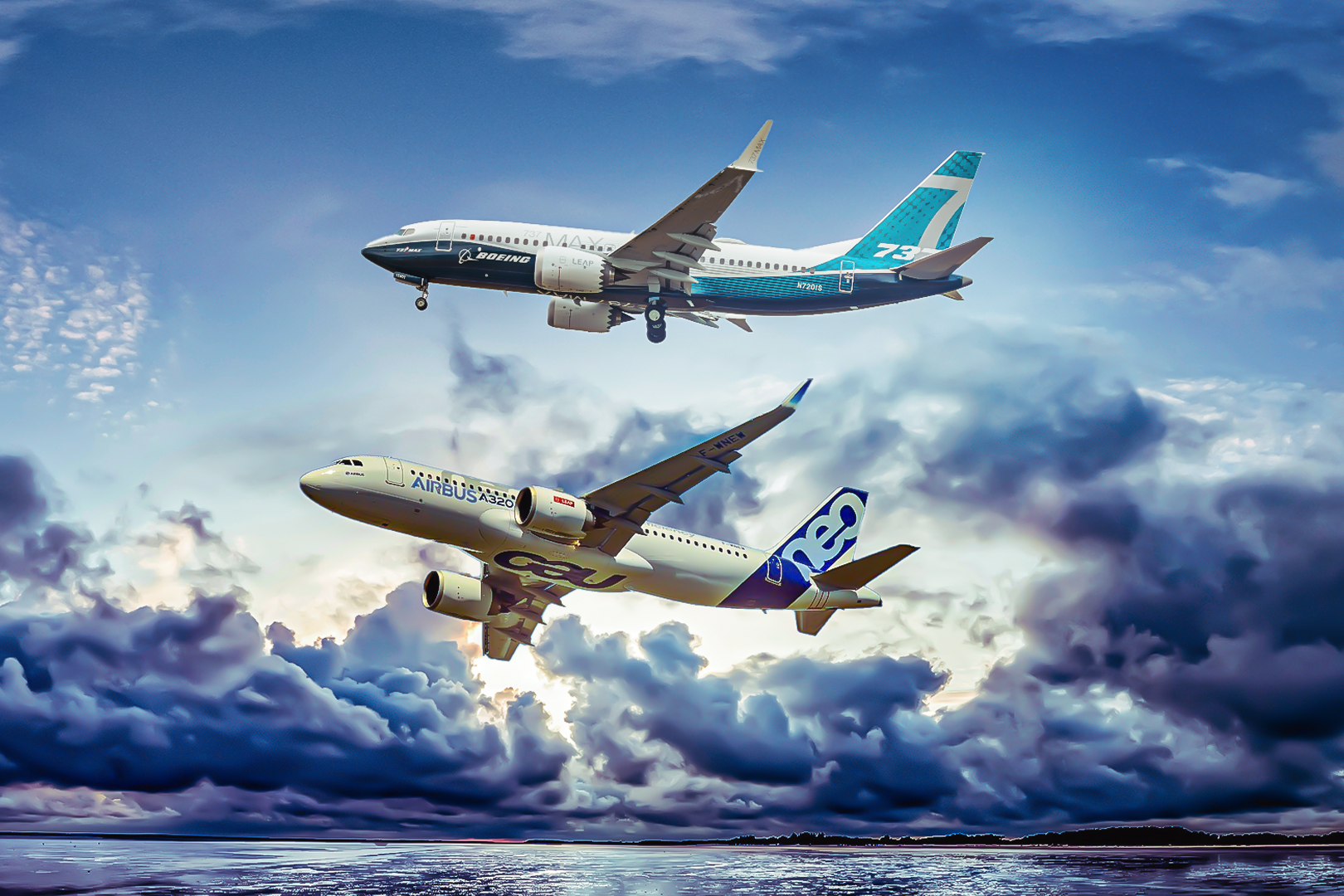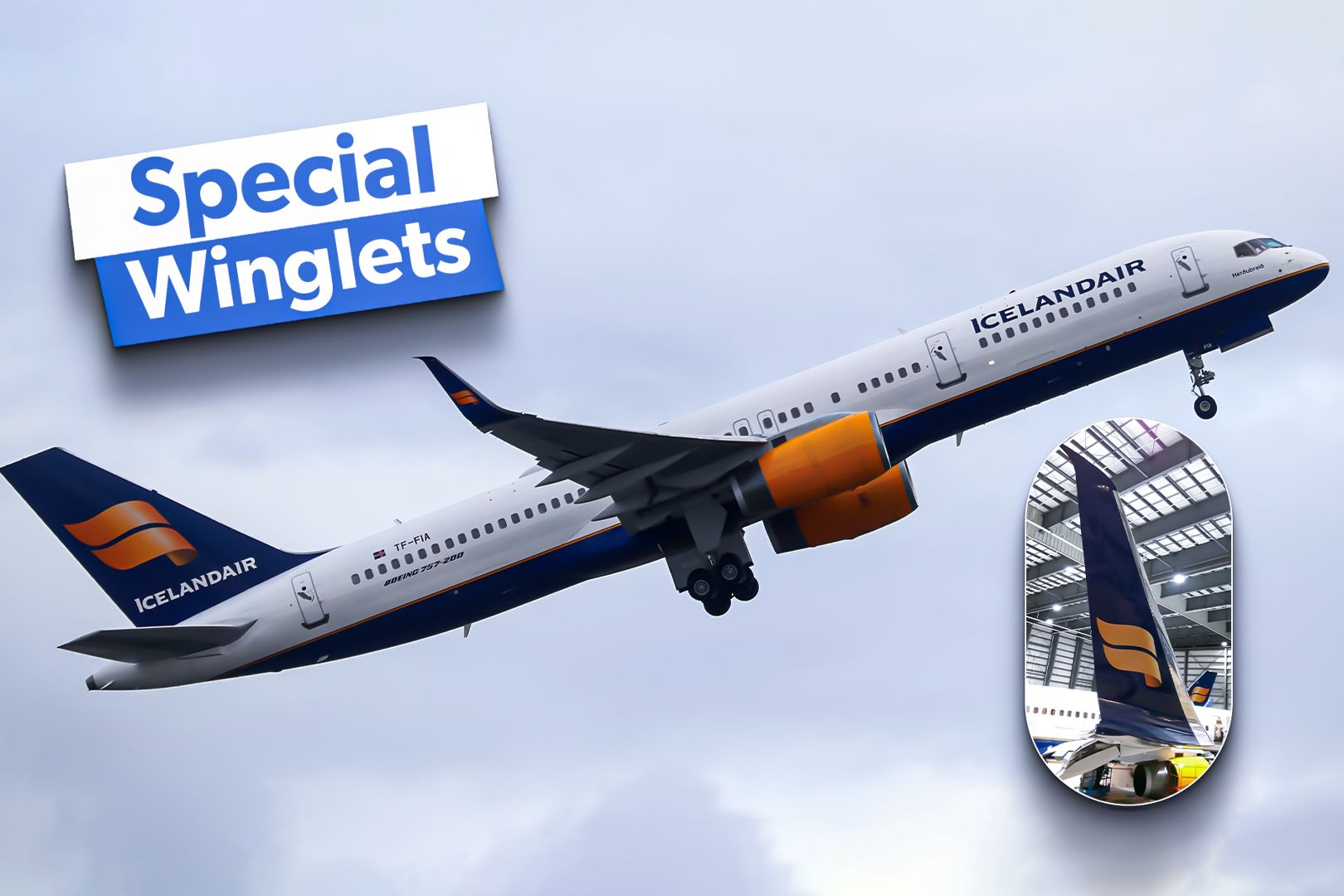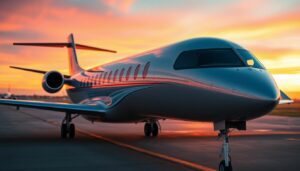The introduction of winglets on passenger jets was a major advancement for the airline industry. The widespread adaptation of this feature truly took off in the 2000s, with ![]() Boeing leading the charge when introducing the feature on its next iteration of the 737. Airbus followed Boeing’s decision several years later, making some wonder if the European aircraft manufacturer copied its rival.
Boeing leading the charge when introducing the feature on its next iteration of the 737. Airbus followed Boeing’s decision several years later, making some wonder if the European aircraft manufacturer copied its rival.

- First Delivery
-
March 28, 1988
- Number Delivered
-
11,524
- Production Sites
-
Toulouse, France
The design of the Sharklet closely mirrors Boeing’s 737 winglet and serves the same purpose: to enhance efficiency and thus reduce fuel burn. Airbus was almost certainly inspired by the success of Boeing’s addition to the Next Generation 737 family. Still, it did not copy the design from Boeing, but rather a different aviation firm. Though Airbus had a slow and controversial launch of blended winglets, it had a similar wingtip solution for its aircraft long before Boeing.
Airbus Was Accused Of Copying Designs From A Third Party
While similar in appearance, the stories behind Boeing and Airbus’ blended winglets are slightly different. The development of blended winglets for both the Boeing 737 and Airbus A320 was made possible by a third-party firm, Aviation Partners. This group was involved in a lot of initial testing of blended winglets on private aircraft and worked closely with Boeing to deploy the technology on the Boeing 737. Initially, ![]() Boeing wanted the winglets for its Boeing Business Jets (BBJ), but eventually, this became an initiative for commercial customers.
Boeing wanted the winglets for its Boeing Business Jets (BBJ), but eventually, this became an initiative for commercial customers.
Years later, when Airbus worked with Aviation Partners to install blended winglets on the A320, it was not happy with the test results it got. After the initial tests in 2008, Aviation Partners performed other flight tests with a JetBlue A320, which yielded far more encouraging results. In subsequent years, Airbus revealed its design for a Sharklet, but this unveiling resulted in backlash from Aviation Partners.
|
Manufacturer |
Blended Winglet Testing Start |
|
Airbus |
2008 |
|
Boeing |
1997 |
Aviation Partners claimed Airbus had copied their design, even suing the European manufacturer. Ultimately, Airbus lost and paid its former partner an undisclosed amount to keep the Sharklet program alive. Today, Sharklets are installed on all A320neo family jets, and many older A320s have been retrofitted with them for enhanced efficiency.
The Original A320 Wingtip Was Designed For Efficiency
While Airbus was late to the large winglet game, its A320s were equipped with special wing tips long before the 737 was adorned with the modification. This wingtip, sometimes known as the “wingtip fence,” serves a similar purpose to today’s Sharklet or similar equivalents. Only a handful of A320s were produced without them early in the A320’s existence, but almost all models were equipped with this cost-saving device before Sharklets.
The A320 was not the only Airbus jet to be equipped with fence tips. The A300 and A310 could also be modified to include this feature, and this design is also the default option for the A380, the world’s largest passenger jet. Though they serve similar purposes, the A320’s wingtip fence is less beneficial for operators compared to the Sharklet, which offers an upgrade in efficiency and, thus, fuel consumption compared to its predecessor. The Sharklet also more closely resembles the winglets found on Next Generation 737s, according to SCRIB and The Boeing 737 Technical Site:
|
Winglet |
Height |
|
Boeing 737 NG Winglet |
8′ 2″ |
|
A320 Family Sharklet |
8′ 2″ |
So, though Airbus was late in adding blended winglets, its wingtip fence already served a similar purpose. The firm launched the Sharklet to improve efficiency and become a better competitor to the Boeing 737.
Winglets Grew In Popularity From The Late 1980s
Though Airbus might have copied the design of blended winglets, the firm had already equipped enhanced wingtips on many of its jets. Winglets were first introduced to modern commercial jets in the 1980s, according to NASA Spinoff. The previous decade had seen their adaptation to smaller aircraft, but by the 1980s, larger jets were being equipped with the new technology. Aircraft like the Boeing 747-400 and McDonnell Douglas MD-11 began flying with enhanced wingtips by the end of the decade, but the winglet’s popularity would not increase dramatically until the early 2000s.
Boeing initially launched the Next Generation 737 program in 1993. The updated aircraft model capitalized on the type’s massive success while improving its design to make it more competitive with the Airbus A320. In 2000, just two years after its entrance into service with Southwest Airlines, Boeing opened the option for operators to install blended winglets on their 737s, opening the doors for mass adaptation.
This decision proved to be a successful one, as operators enjoyed lower operating costs thanks to the relatively minor addition. Despite its success, the first A320 with Sharklets, Airbus’ equivalent to the winglet, did not roll out of Airbus’ facilities until 2012, according to Airport Technology.

Related
Why There Will Soon Be More Airbus A320s Flying Than Boeing 737s
The A320 family of commercial jets is set to overtake the Boeing 737 to become the most delivered in 2025.
Winglets Reduce Fuel Consumption Over Existing Options
Given the massive investments companies like Boeing and Airbus have made in winglets, it should come as no surprise that they can significantly reduce fuel burn on aircraft. To get off the ground, airplanes rely on lift, which is created when low-pressure air moves above the wing and high-pressure air moves below it. However, at the end of the wing, this force can create small vortices, which winglets reduce. Thus, drag from these vortices is limited, allowing operators to use less fuel.
Fuel is among an airline’s highest operating costs, so finding ways to reduce consumption can increase profits for operators. Airlines across the world have embraced winglets for this reason. For example, a Southwest Airlines Boeing 737-700 is estimated to save an impressive 100,000 gallons of fuel annually thanks to blended winglets. Blended winglets tend to offer a 4-6% reduction in fuel consumption.
The winglet’s purpose of reducing fuel consumption might be another reason Airbus waited to develop its own blended winglet. In the 1990s, fuel was cheaper and less of a concern for airlines. However, post 9/11, there was a drastic increase in the price of oil, raising pressure on airlines to reduce fuel burn wherever possible. Airbus might have waited until fuel became more expensive to offer additional modifications to improve efficiency.

Related
Scimitar Winglets On The Boeing 757: Everything You Need To Know
The latest scimitar winglet design further enhances fuel efficiency by over 1%
Not All Winglets Are Blended Winglets
While Airbus and Boeing narrowbodies are the most common aircraft to be equipped with winglets, widebody aircraft also have these cost-saving devices. In fact, winglets were first installed on widebody jets. However, unlike narrowbody aircraft, long-haul jets typically use a different type of winglet (if they use any at all).
The first commercial aircraft to fly with winglets was the Boeing 747-400, but winglets have been added to other widebody jets like the A330 and A340 as well. These jets use canted winglets, which are smaller and less blended with the rest of the aircraft’s wing. However, there are some exceptions. Several operators have opted to install blended winglets on their Boeing 767 aircraft, and the A330neo and A350 both sport a shorter blended winglet, though it is notably smaller than ones seen on narrowbody aircraft.
|
Winglet Type |
Major Aircraft Models |
|
Blended Winglet |
Airbus A320 Family, Airbus A330neo, Airbus A350, Boeing 737, Boeing 757, Boeing 767 |
|
Canted Winglet |
Airbus A330, Airbus A340, Boeing 747 |
Some blended winglets look different from others. For example, Boeing offers a “split scimitar” winglet for some 737s that has an additional piece extended downward from the wingtip. A similar design was used for Boeing’s AT (Advanced Technology) winglet, which is featured on the Boeing 737 MAX. These are positioned to become more prominent as the 737 MAX continues to replace older 737 models.
Airbus Copied The Blended Winglet Design
While some suspect Airbus of copying Boeing’s design, it was actually determined that Airbus copied the design from Aviation Partners. This led to legal conflict and financial reparations but still allowed Airbus to equip its A320 family jets with a more efficient wingtip. This came long after the success of the Boeing 737’s blended winglet.
Airbus had plenty of reasons to wait to develop the Sharklet. Most of its jets already came with a wingtip fence that helped enhance the efficiency of A320 family aircraft. Additionally, with fuel prices remaining low in the 1990s, efficiency wasn’t enough of a concern to justify the costs of adding a new winglet to aircraft.
Today, most of Airbus’ next-generation aircraft are equipped with some type of blended winglets. As airlines continue to welcome new jets into their fleets, the Sharklet’s prominence is only positioned to grow as it offers enhanced efficiency for airlines across the globe.









